![]()
![]()
![]()
Use LEFT and RIGHT arrow keys to navigate between flashcards;
Use UP and DOWN arrow keys to flip the card;
H to show hint;
A reads text to speech;
32 Cards in this Set
- Front
- Back
|
Line |
An identifiable path, 1D, can vary in width and dimension. |
|
|
Shape |
When a line connects, 2D |
|
|
Form |
Form defines objects in space, 3D |
|
|
Space |
The feeling of depth, the area in or around the art. |
|
|
Value |
The brightness or darkness of a colour. |
|
|
Texture |
The surface quality of an object: that we sense through touch. |
|
|
Contrast |
A difference in values, colours, textures, shapes, etc. |
|
|
Unity/Harmony |
The quality of wholeness that is achieved |
|
|
Balance/proportion |
-symmetrical -assymetical -radical |
|
|
Movement |
The path the viewers eye follows |
|
|
Rythm |
A regular repetition of elements to produce a feel of movement. |
|
|
Pattern/variety |
The repetition of anything to create a design. |
|
|
Focal point |
The centre of attention - the thing in focus |
|
|
Monochromatic |
Art done with only one colour with its shades and tints. |
|
|
Analogous |
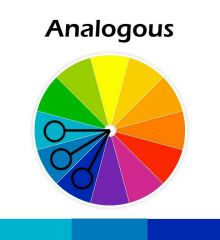
Colours that are next to each other on the colour wheel. (With a common colour) |
|
|
Complementary |

Colours that are opposite each on the colour wheel. |
|
|
Split complementary |
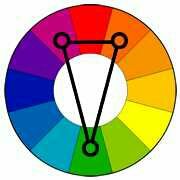
Made up of 1 colour and the 2 colours around its complementary colour. |
|
|
Primary |
Red, blue, and yellow. Mixed to make other colours. Can't be mixed from other colours. |
|
|
Secondary |
Purple, green, and orange. Made with 2 primary colours. |
|
|
Tertiary |
Yellow-green, red-orange. Made by mixing a primary and secondary. |
|
|
Triadic |
A set of colours evenly spaced out on the colour wheel. |
|
|
How do u make a shade? |
A colour + black |
|
|
How do you make a tint? |
A colour + white |
|
|
Hue |
A colour without any black, gray, or white. |
|
|
Intensity |
The strength of a colour. |
|
|
Colour wheel |
A circle with different coloured sectors used to show the relationships between colour. |
|
|
What must you do to make a shape appear to be a form? |
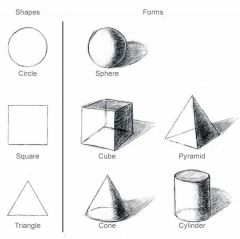
You must shade the shape to look 3D. |
|
|
Hatching |
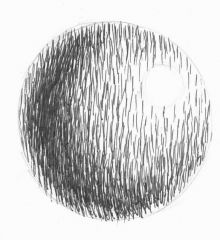
Using lines to shade and give form. |
|
|
Cross-hatching |
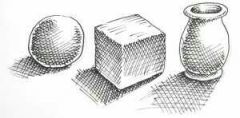
Crossing lines to shade. |
|
|
Scumbling |

A lot of scribbling to shade. |
|
|
Pointilism |

Dotting to shade. |
|
|
What are the 6 ways to use space? |
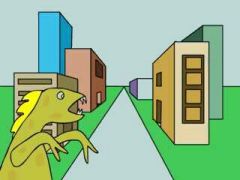
Overlapping, higher/lower, size, detail, perspective, converging lines. |

